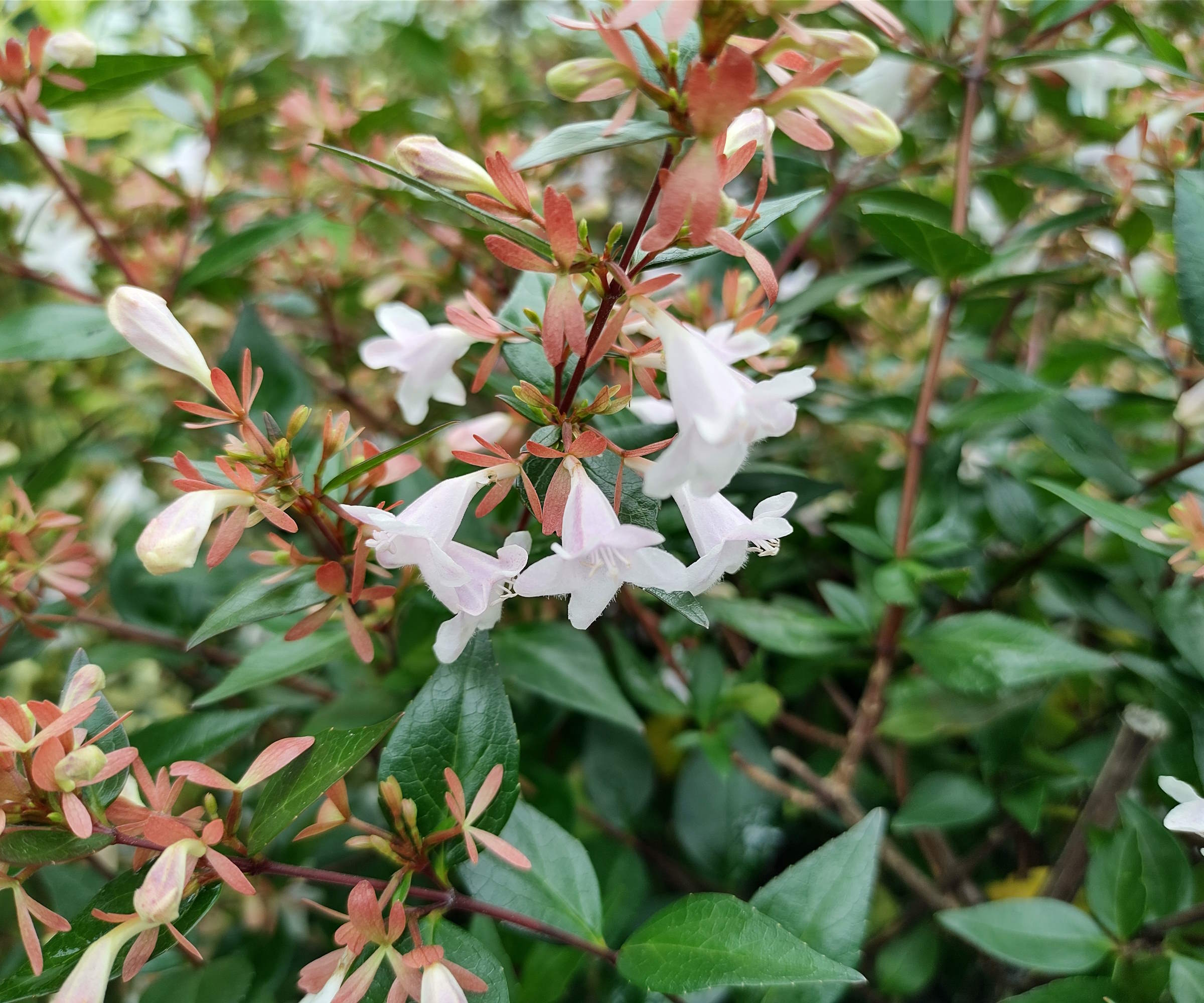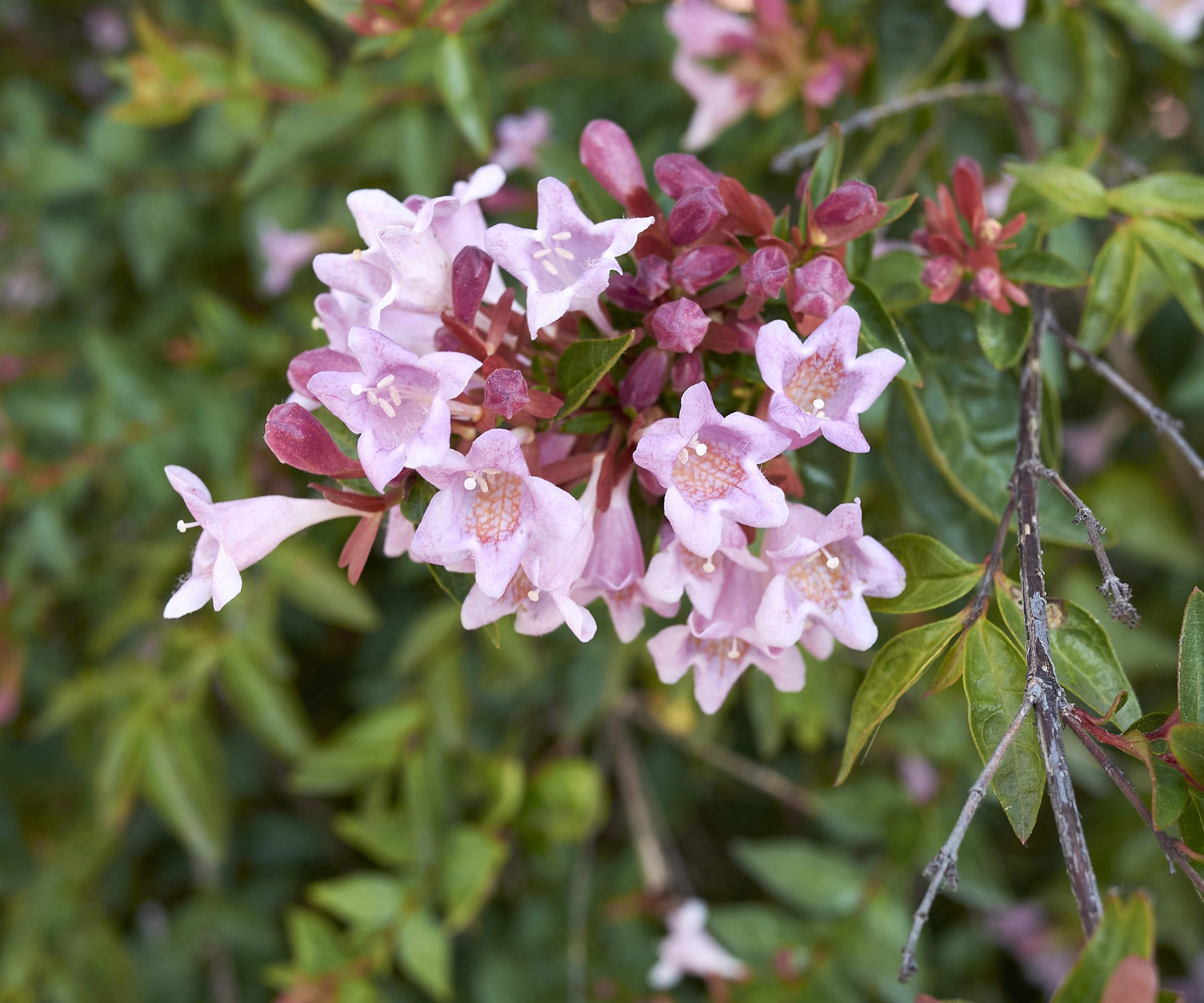
Abelia are flowering shrubs that can be evergreen, semi-evergreen, or deciduous and they are popular as part of many backyard ideas thanks to their versatility, as well as their beauty.
The graceful shrubs grow between three and six feet in height and produce blooms over a long period throughout summer. The height and spread of an abelia can be controlled by annually pruning to preserve the shape and health of the shrub.
Knowing when and how to prune abelia is an important part of caring for them. To help you understand how to trim these fantastic shrubs in your backyard, we hear from two plant experts and get some simple steps for proper pruning.

How important is pruning abelia?
Abelia are regarded generally as low maintenance shrubs, but they do benefit from pruning. It will depend on the variety of abelia that you are growing, or your chosen garden style, whether or not you do choose to trim annually - and also the scale of trimming you choose.
Megan Lacey, horticulture section leader at Lewis Ginter Botanical Garden, says abelia are ‘pretty sturdy’ shrubs and ultimately ‘the choice to prune or not to prune is personal’. She explains: ‘I have seen some abelia that have never been pruned, and the effect is big and beautiful. I have also seen abelia cut into small rounded forms.’
‘The abelia seemed healthy, but I wouldn’t recommend that heavily pruned approach,’ she adds.
Pruning abelia annually can promote new growth and maintain an overall natural shape. In addition, trimming helps maintain plant health as it removes any diseased material and improves the air circulation and sunlight penetration through the shrub.
When to prune abelia

Now you have an idea of why pruning abelia is an important part of their care, so you may wonder to yourself - when do you prune abelia? To avoid making a pruning mistake that can rob you of a year’s worth of blooms, and also risk the health of your shrub, it is imperative to trim at the right time.
Abelias flower on new wood that is produced in that current season. You can trim abelia at any time during the plant's dormancy period, from late November to early March, but the preferable time is to do the pruning before the plant actively starts growing that year.
‘The best time to prune abelia shrubs is late winter or early spring, before they start to grow, as it allows time for new growth and the production of flowers on the new growth,’ advises Autumn Hilliard-Knapp, horticulturist at Perfect Plants Nursery. ‘Pruning after the growing season has started may result in the loss of flowers.’
The exact time that an abelia will start to grow in late winter or early spring will be dependent on your climate. Though, the best time to prune will typically be in February or March in many US hardiness zones. So it may be a task to add to your late winter gardening checklist, for they are plants to prune from February onwards.
How to prune abelia

Pruning abelia need not be tricky or daunting, as gentle trimming once a year can ensure you have a healthy and beautiful shrub to enjoy in your backyard landscaping. Before starting to trim, Autumn Hilliard-Knapp highlights the importance of making sure your pruning tools, such as pruning shears or garden shears, are clean and sharp prior to cutting any branches.
‘Clean and sharpened tools help make clean cuts, reducing the risk of damaging the plant,’ says Autumn. ‘Sterilize your pruning tools with rubbing alcohol or a bleach solution before and after use to avoid spreading diseases.’
Once your tools are prepared, take a moment to assess the shape and growth pattern of the shrub before doing any pruning. Looking at the plant and analysing its current growth can help you make more informed decisions - it will always work out better when pruning is planned rather than rushed.
Megan Lacey recommends going for a ‘natural shape’ when pruning an abelia. She adds: ‘It is the healthiest shape for the plant. A general rule with pruning is also not to remove more than a third of the healthy plant.’. Getting carried away and going past the one-third pruning rule can stress the shrub and it may struggle to recover from the trimming.
Megan highlights four key steps to following when pruning an abelia each year:
- Start by removing any dead or damaged branches
- Remove any crossing or rubbing branches - these can become entry points for diseases
- To rein in an unruly abelia, you can thin branches. Look for long shoots coming off a good, sturdy branch inside the plant. Cut where the shoots are coming off the branch
- To help rejuvenate the interior, you can also remove some of the oldest, thickest branches down to the ground
As you prune, continue to step back every now and then to assess the shape and plan what you will trim next. This helps to make sure that the shrub ends up balanced and well-proportioned. Megan adds ‘remember to cut at a 45-degree angle’ when pruning branches, as this technique prevents water building up on the pruning cut and alleviates the risk of diseases.
A pair of pruning shears constructed of forged aluminum handles and hardened steel blades - ideal for pruning shrubs
A pair of pruning shears with a cutting blade made of high-carbon Japanese steel that has a 5/8-inch cutting capacity
Pruning shears featuring a fully hardened, precision-ground steel blade with a rust-resistant, low-friction coating
FAQs
Can I prune abelia in summer?
It is not recommended to do any large-scale pruning to abelia in the summer. The issue with trimming at this time of year is that you will be removing new growth that will be carrying flower buds - as abelia bloom on new wood. There is some gentle trimming of abelia that can be done in summer without impacting the overall appearance or health of the shrub. That includes deadheading flowers to extend the period of blooming and also removing any dead, diseased, or damaged branches you identify - as these can be a risk to the overall health.
Can you prune abelia in the fall?
It is not ideal to prune abelia in the fall. Trimming at this time of year will stimulate new growth that will not harden off in time for winter and be very vulnerable to damage from cold weather and frosts. This will make the abelia more susceptible to pests and diseases.
Can abelia be cut back hard?
Old and neglected abelia can be pruned hard and the shrubs can handle a more aggressive pruning. However, hard pruning should only be done every four years at a minimum to avoid overly-stressing and weakening the shrub. To cut abelia back hard, simply use a pair of loppers or a pruning saw, depending on the size of the branches, to cut all branches back to around two feet from ground level.
There are advantages to adding pruning abelia to your gardening diary for late winter or early spring. That time of year is ideal for pruning lots of other deciduous shrubs too, including pruning crepe myrtle and pruning a butterfly bush.







